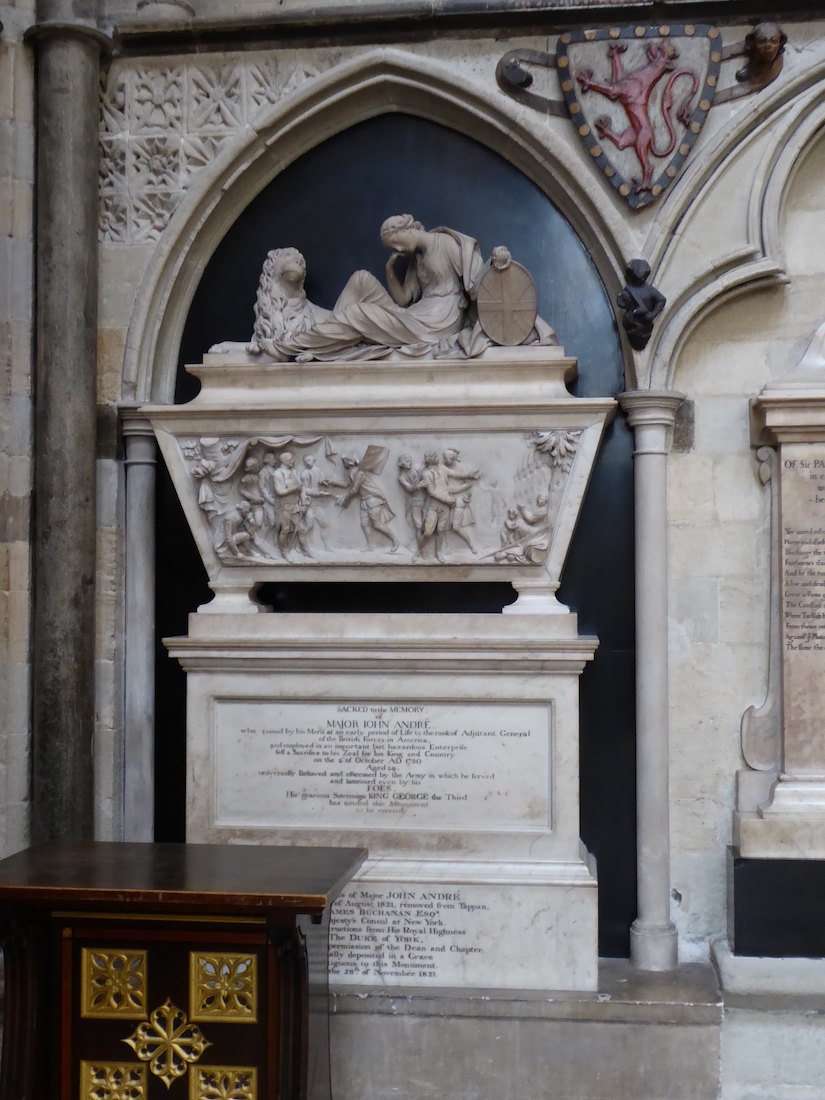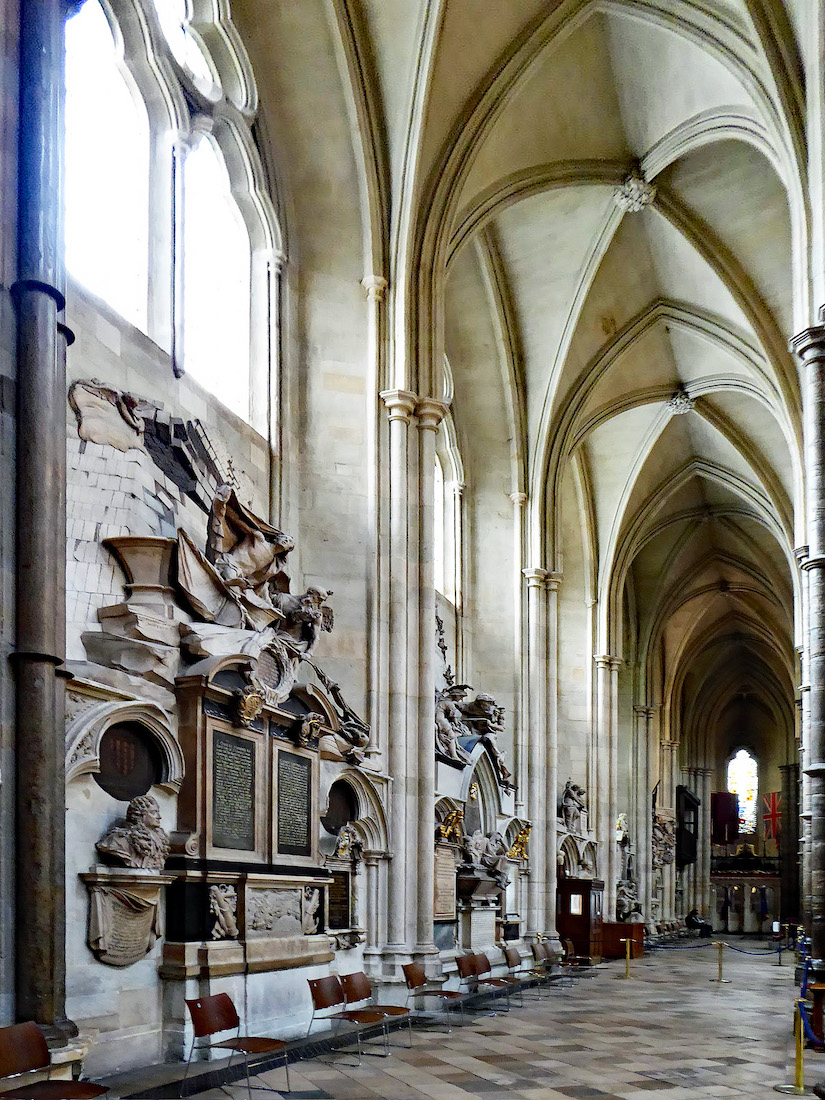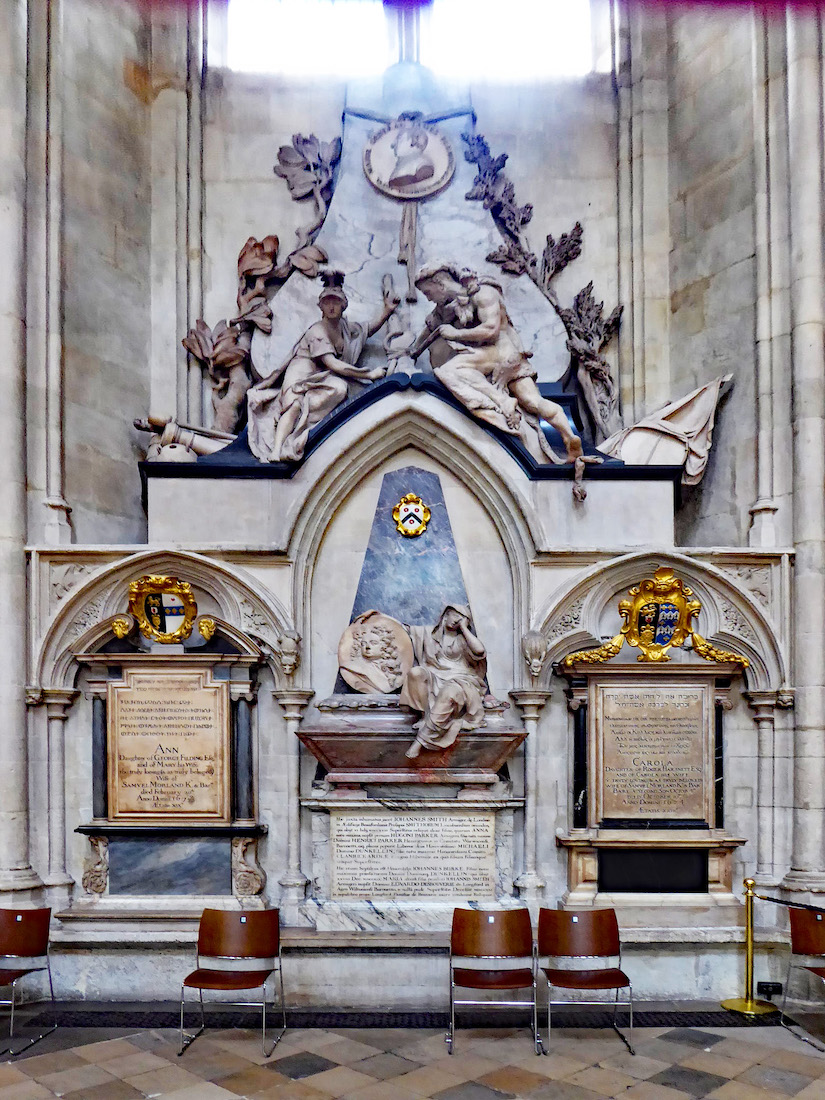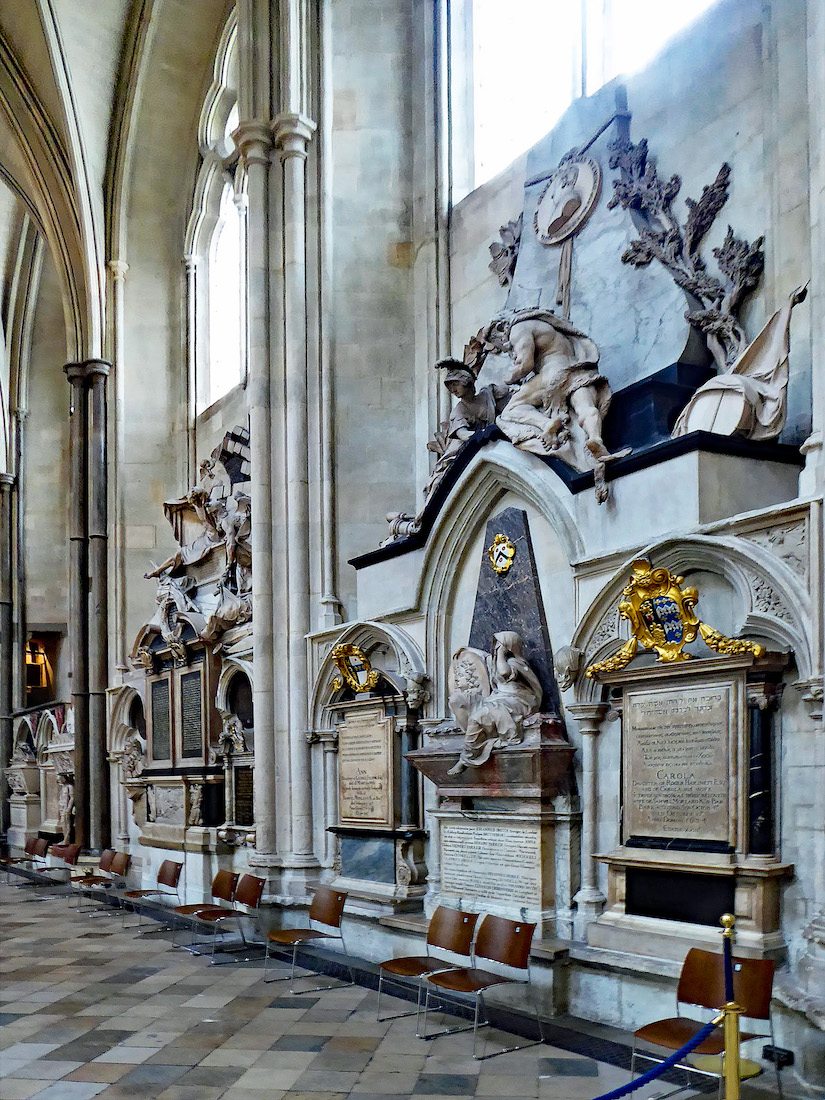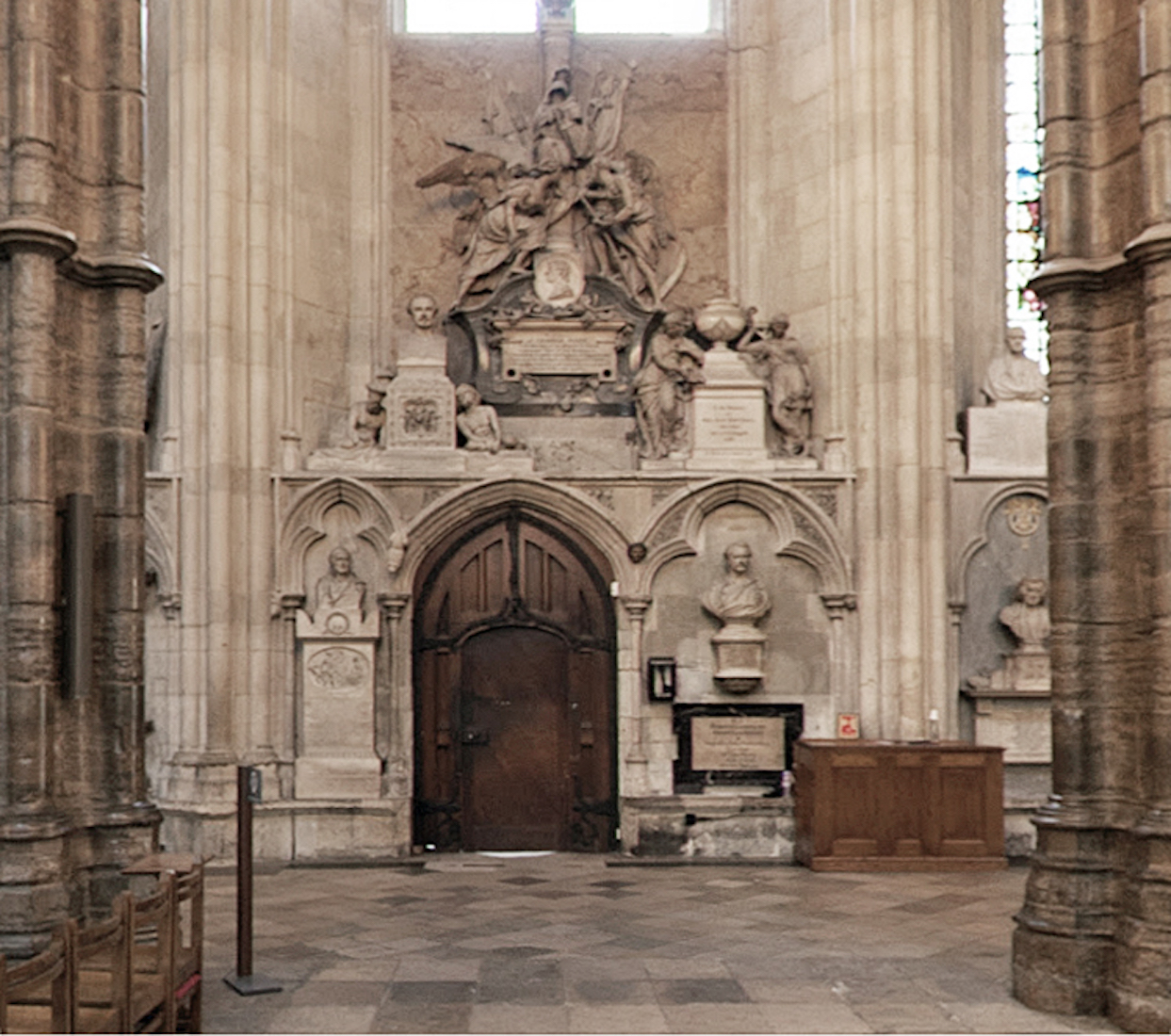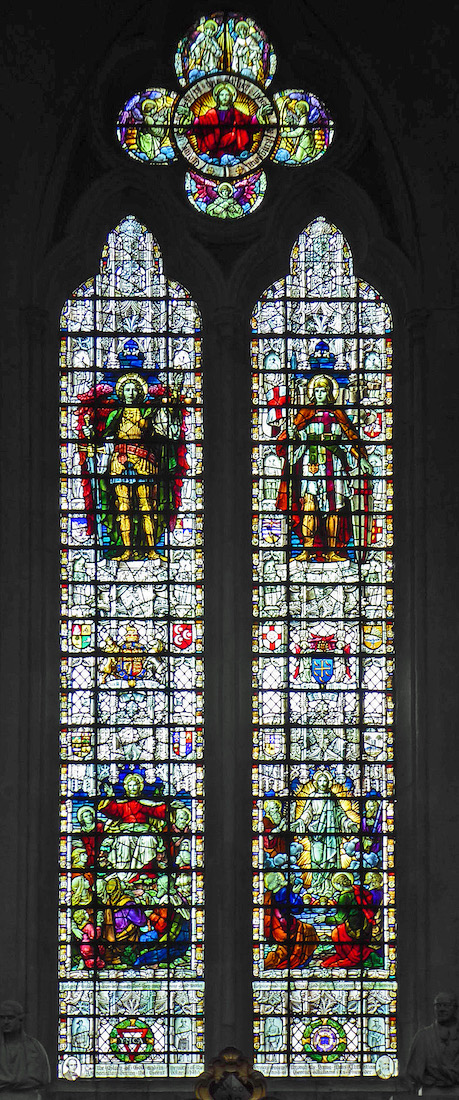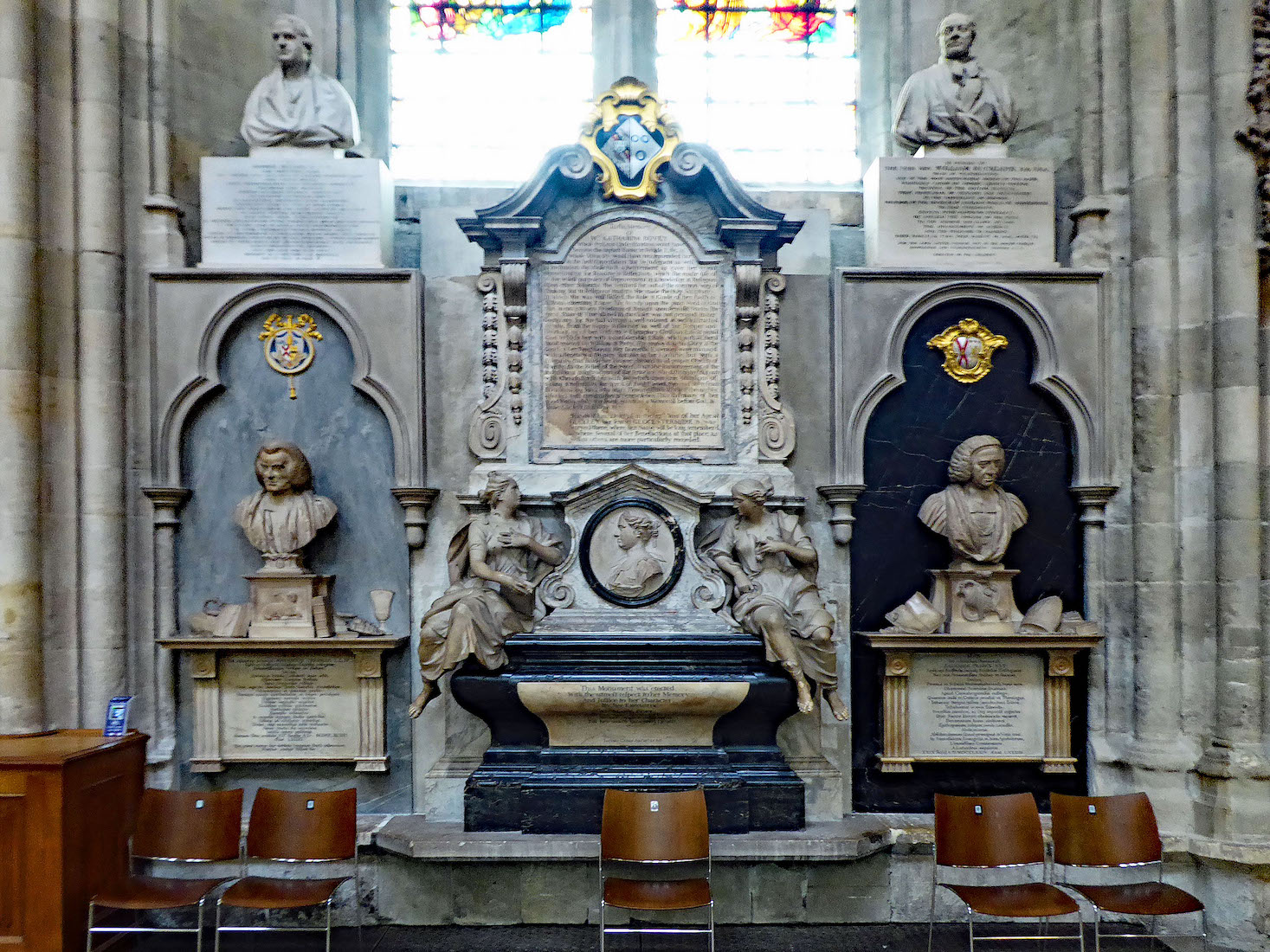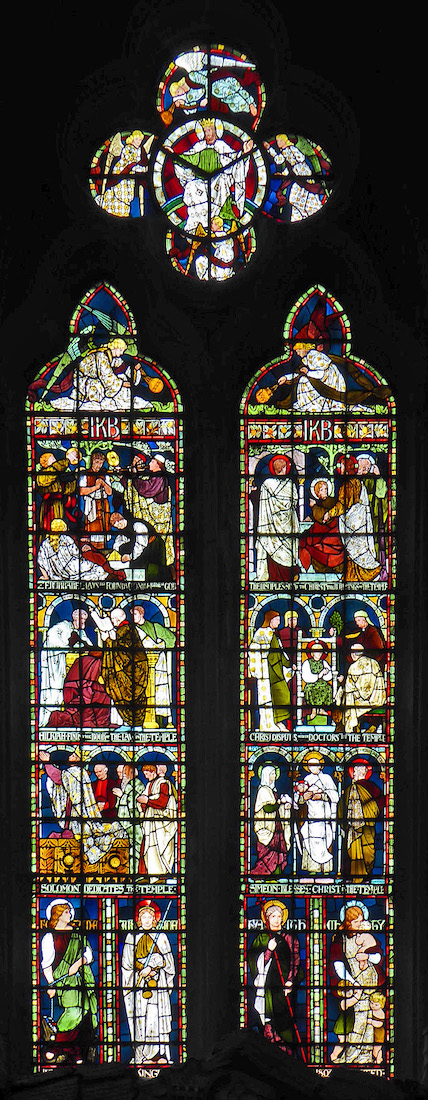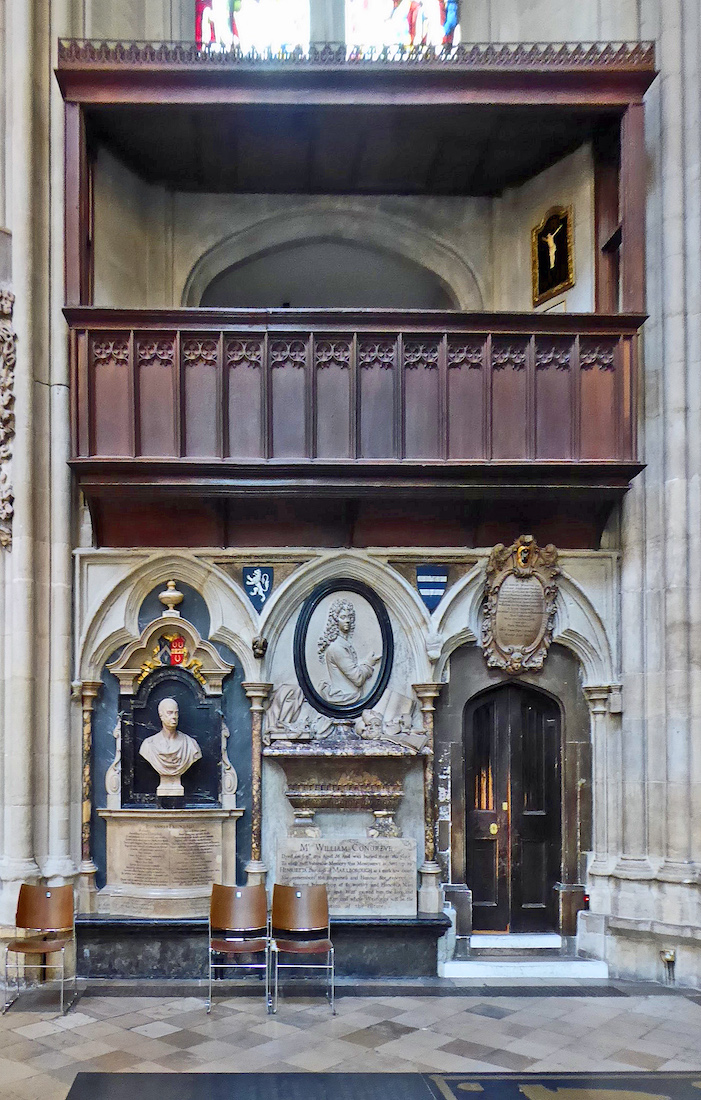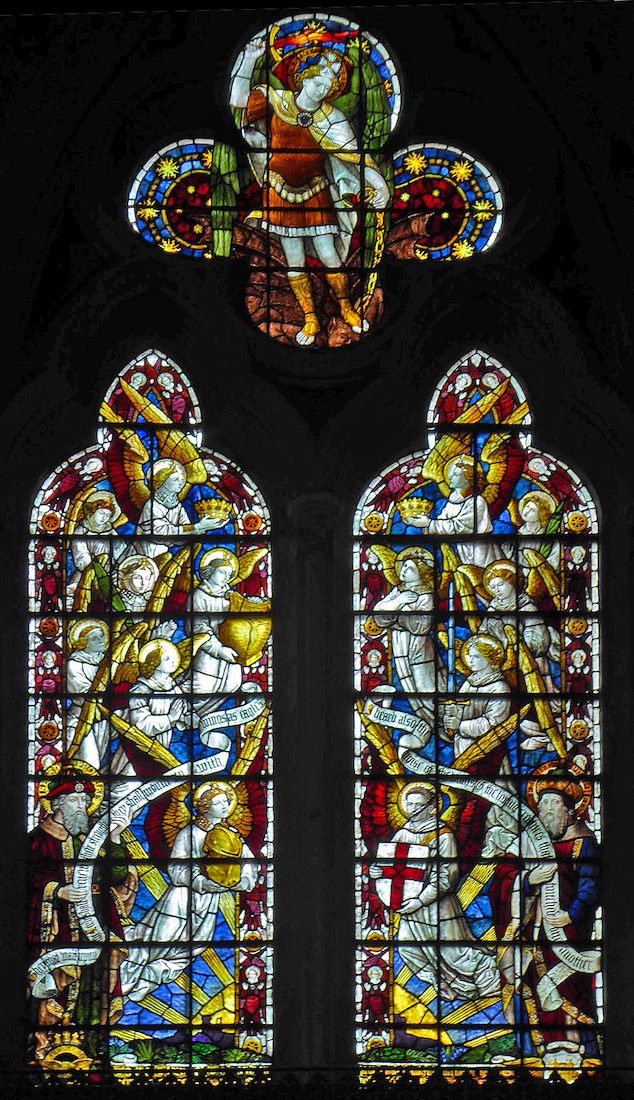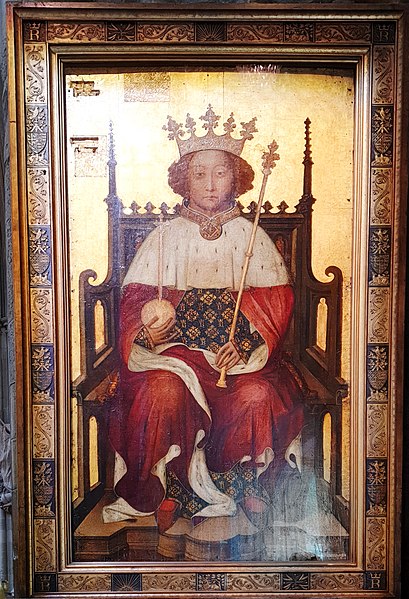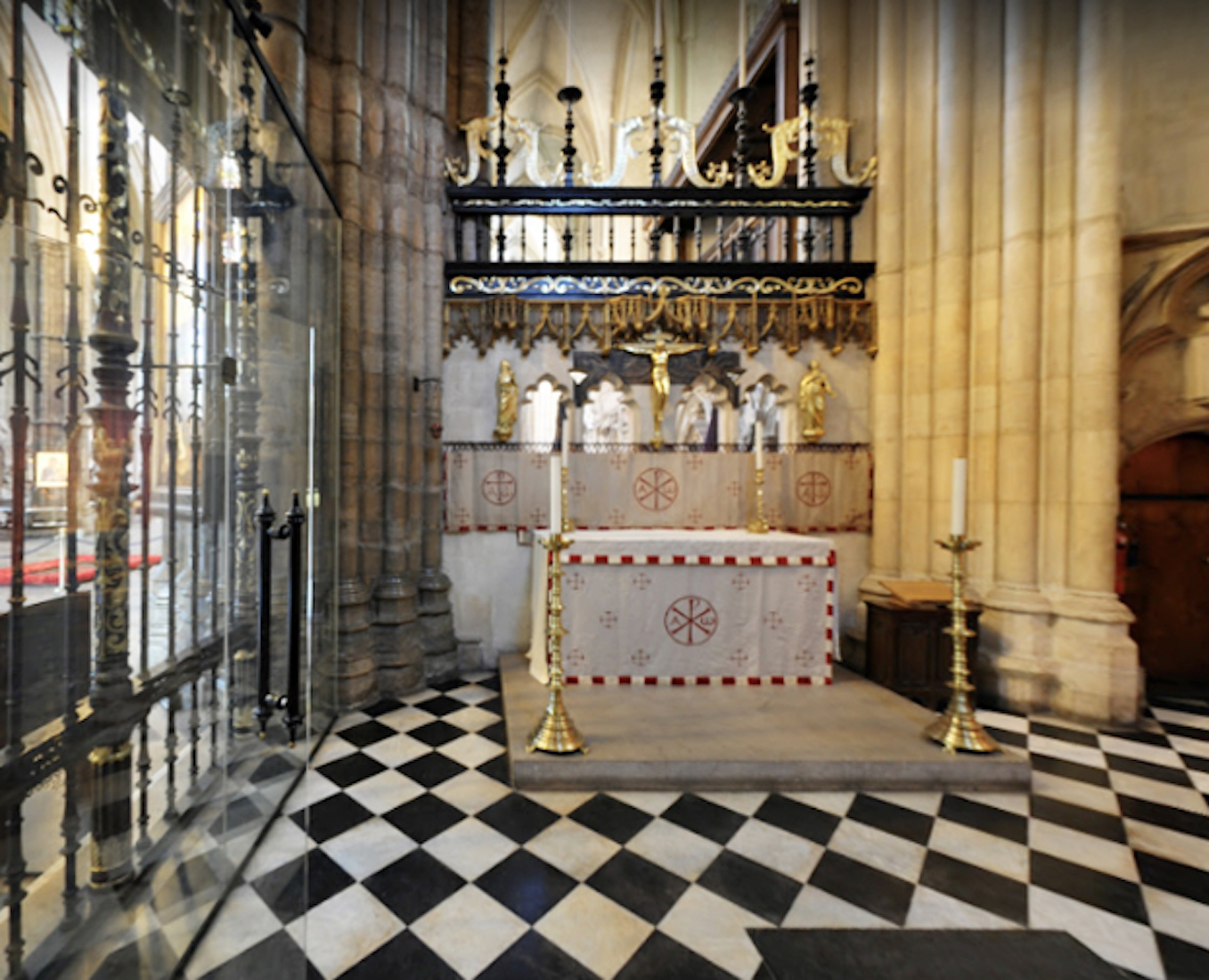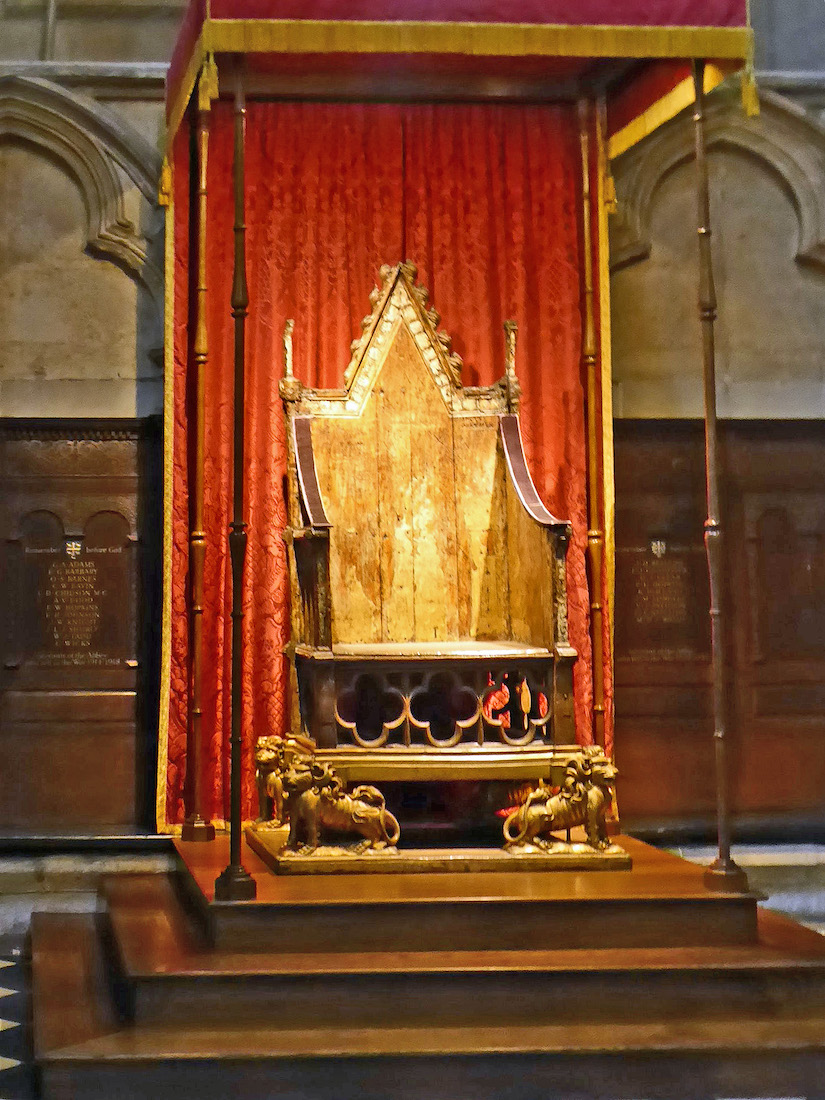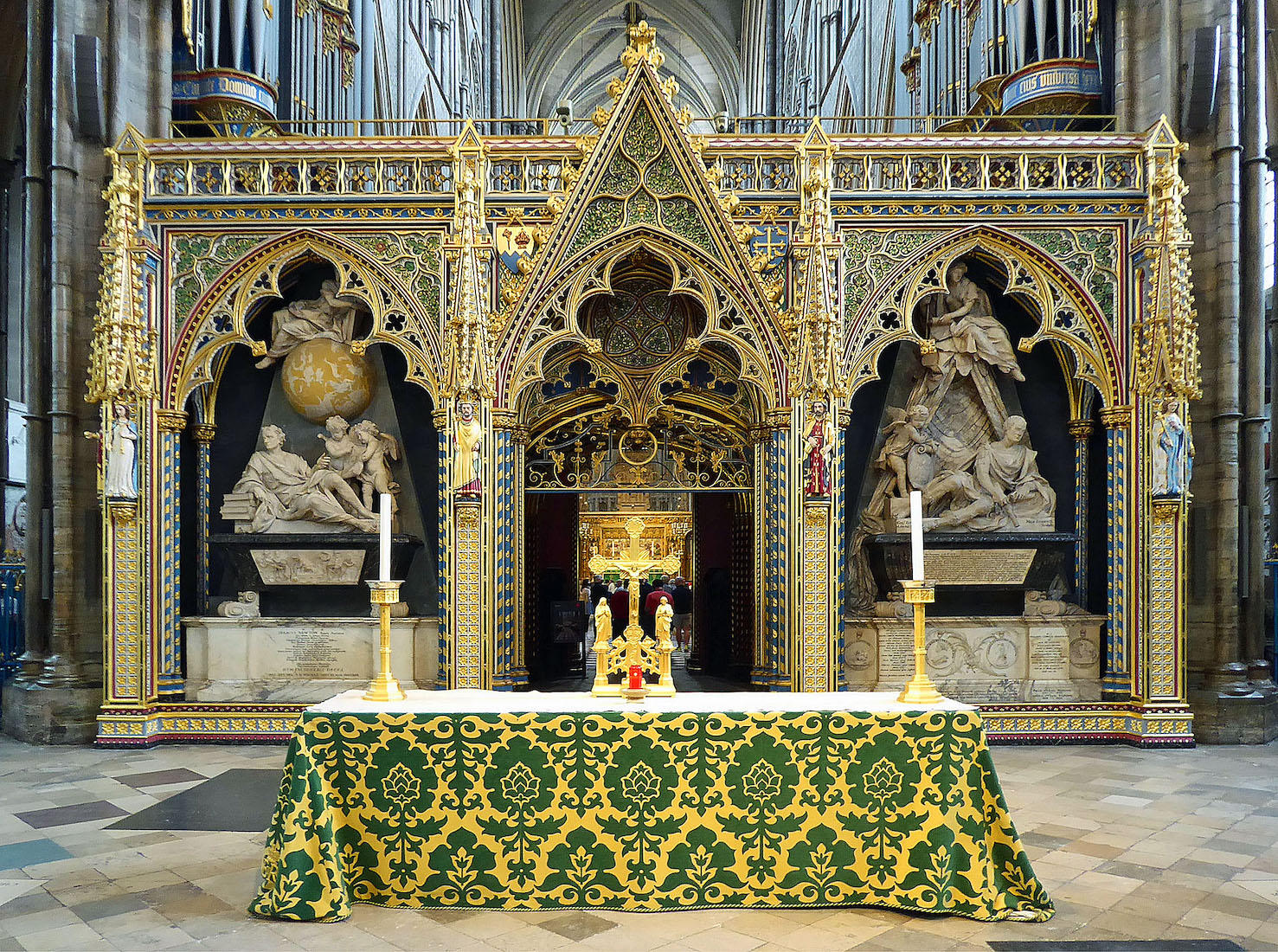
The main focus for the nave is the nave altar with the beautiful quire screen behind. We shall return here to investigate these in more detail. INDEX
B22. SOUTH WALL BAYS 7 – 2 GSV
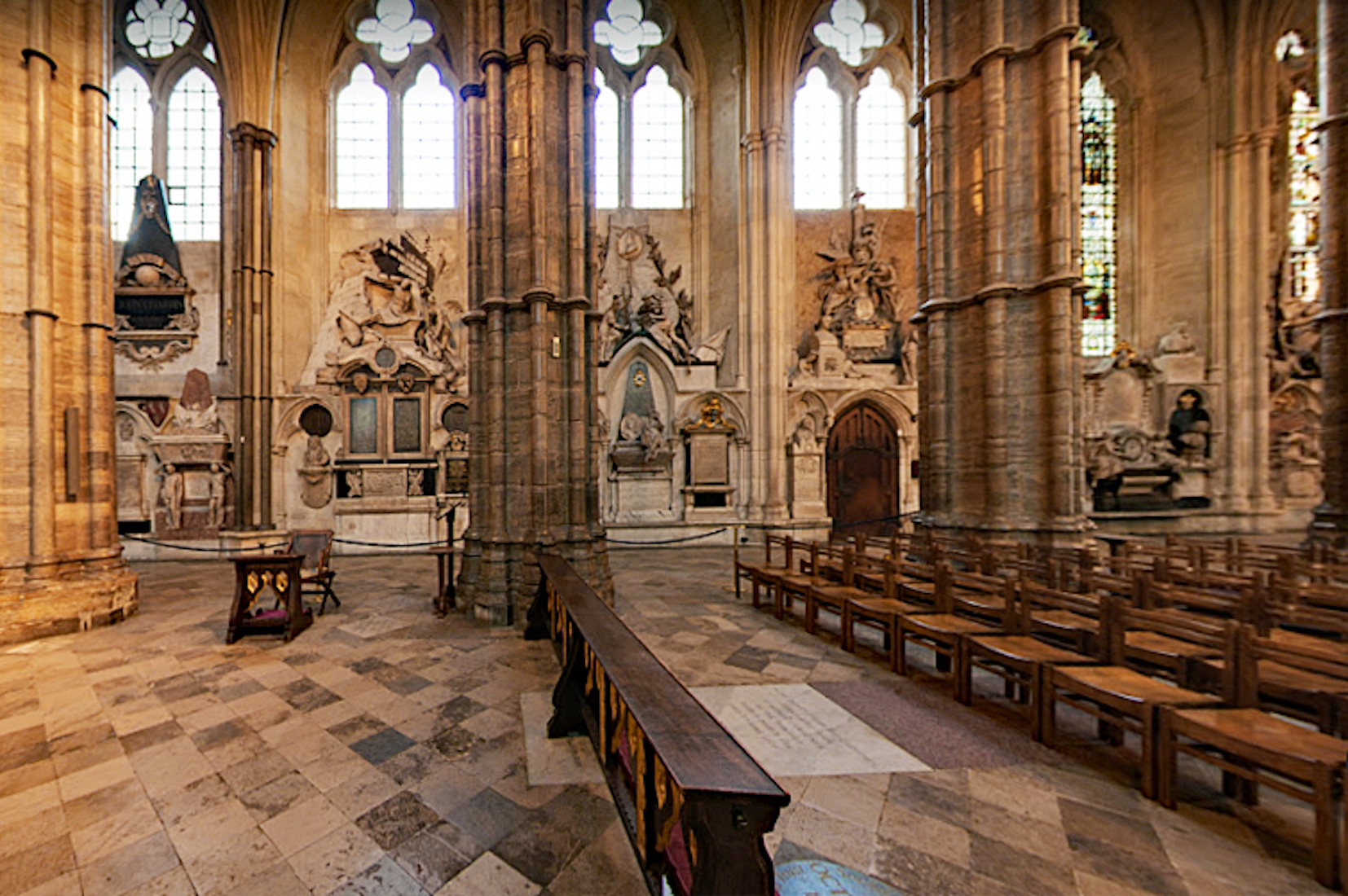
However, our immediate goal is to walk across to investigate the South aisle of the nave. This panoramic view shows Bays (or parts of Bays) 7 – 2. The windows of Bays 7 –4 are all shortened because of the outside cloister. The glass is clear here too. [Photo Credit: Google Street View]
B23. SOUTH BAY 7, MEMORIALS AMT AMT
We begin with South Bay 7, showing two of the monuments. At left is a memorial to Major John Andre (d.1780), designed by Robert Adam. The monument at right is to Lt Roger Townshend (d.1759), and is designed by Robert Adam. This large marble monument has at its centre an elaborately ornamented sarcophagus supported by two armed native American Indians. It is almost identical to another memorial in the Imperial War Museum.
B24. SOUTH NAVE AISLE LOOKING WEST AMT
This is a view along the South aisle looking toward the West, and starting at Bay 6.
B25. SOUTH BAY 6, MONUMENTS AMT
The monument in Bay 6 is to Lt General William Hargrave (d.1751); it is another work of intense Baroque drama by Louis Francois Roubiliac (1757).
B26. SOUTH BAY 5, MONUMENTS AMT
These are the monuments in South Bay 5. The large monuments at the top is to Major General James Fleming (d.1751), and is by Louis Francois Roubiliac. The obelisk monument below is to John Smith (d.1718), and is by John Michael Rysbrack. At the sides are memorials to Carola Morland,wife of Sir Samuel Morland, and Ann Morland, third wife of Sir Samuel Morland. Carola is described as being mild, patient, loving, modest and pious, and Ann is said to have been truly religious, sincere and chaste.
B27. SOUTH NAVE AISLE MONUMENTS AMT
Here is an Easterly view of the South aisle from Bay 5.
B28. SOUTH BAY 4, MONUMENT AND DOOR AMT AMT
The most eye-catching feature of South Bay 4 is the door leading out to the cloisters. But above the door is an impressive monument – to Field Marshall George Wade (d.1748), created by Louis Francois Roubiliac. Wade was a British Army officer who served in six major wars before becoming an MP, and responsible for the construction of roads and bridges in Scotland.
B29. SOUTH BAY 3, WINDOW AND MONUMENTS AMT AMT
The stained glass in South Bay 3 is by John Dudley Forsyth, 1922. The top figures are St Michael and St George. • There are five monuments below. In the centre is the memorial to Katherine Bovey (d.1726); it is by J.M.Rysbrack.
B30. SOUTH BAY 2, HOLIDAY WINDOW AND MONUMENTS AMT AMT
The famous window at left is the Henry Holiday Window. It was installed in 1868 to commemorate the great engineer Isambard Kingdom Brunel (d.1859). The overall layout of the window was designed by architect Norman Shaw but the figurative panels are the work of Henry Holiday (for Heaton, Butler & Bayne). •• Below the Holiday window is the remainder of what was once the Abbey’s most absurdly ambitious monument: a towering mass of sculpture that once engulfed most of the window above but was trimmed back to its lower part in later years. The monument is that of Admiral Richard Tyrrell (d.1766) by Nicholas Read which originally rose above the present mass of sculpture to include clouds, trumpeting angels and cherubs and the figure of the deceased across the window itself. It was reduced to its present form in 1882 so we have lost the strange spectacle of the towering clouds and angels, but the figure of Admiral Tyrrell ascending to heaven has been preserved and can be seen in the new triforium galleries.
B31. SOUTH BAY 1, PRIVATE PEW, WINDOW AND MONUMENTS AMT AMT
This Bay is interesting for a couple of reasons. It contains a private pew with access through the lower door. •• The attractive window at right was unveiled in 1922 in memory of members of the Royal Flying Corps who died during the 1914-1918 war. It was given by Mrs Louis Bennett of West Virginia USA, especially in memory of her son, Lt. Louis Bennett junior. The window overlooks the grave of the Unknown Warrior in the nave and is by the artist Harry Grylls (1873-1953). The theme of the window is flying men and wings, illustrated by passages from the prophets Isaiah and Ezekiel. At the top is a figure of St Michael, patron saint of airmen, trampling the devil angel.
B32. ENTRY TO ST GEORGE’S CHAPEL AMT
The base of the Southwest tower contains St George’s Chapel, and the entry is indicated by an over life-size portrait of Richard II as a fully mature man with a small forked beard. The anonymous portrait is painted in a linseed oil medium on panel. It probably dates from the 1390s, but was heavily restored in 1732 and again in 1866.
B33. ENTRY TO ST GEORGE’S CHAPEL AMT
St George’s Chapel has an altar on the Eastern wall, and a Coronation Chair to the South. The Coronation Chair is one of the most precious and famous pieces of furniture in the world. It has been the centrepiece of coronations for over 700 years when it is placed in the centre of the Abbey, in front of the High Altar. The Chair was made by order of King Edward I to enclose the famous Stone of Scone, which he brought from Scotland to the Abbey in 1296, where he placed it in the care of the Abbot of Westminster. The King had a magnificent oaken chair made to contain the Stone in 1300–1301, painted by Master Walter and decorated with patterns of birds, foliage and animals on a gilt ground. The four gilt lions below were made in 1727 to replace the originals, which were themselves not added to the Chair until the early 16th century. The Stone was originally totally enclosed under the seat but over the centuries the wooden decoration has been torn away from the front.
B34. WEST WINDOW, SOUTH SIDE AMT
There are in fact two windows in the Southwest corner of the Abbey. Unfortunately I can find no reference to the South window in St George’s Chapel. The single-light window at the West end of the South aisle.shows a knight made up of a reassembled patchwork of fragments of medieval glass.
This completes our investigation of the Abbey nave. We next look at the quire.


